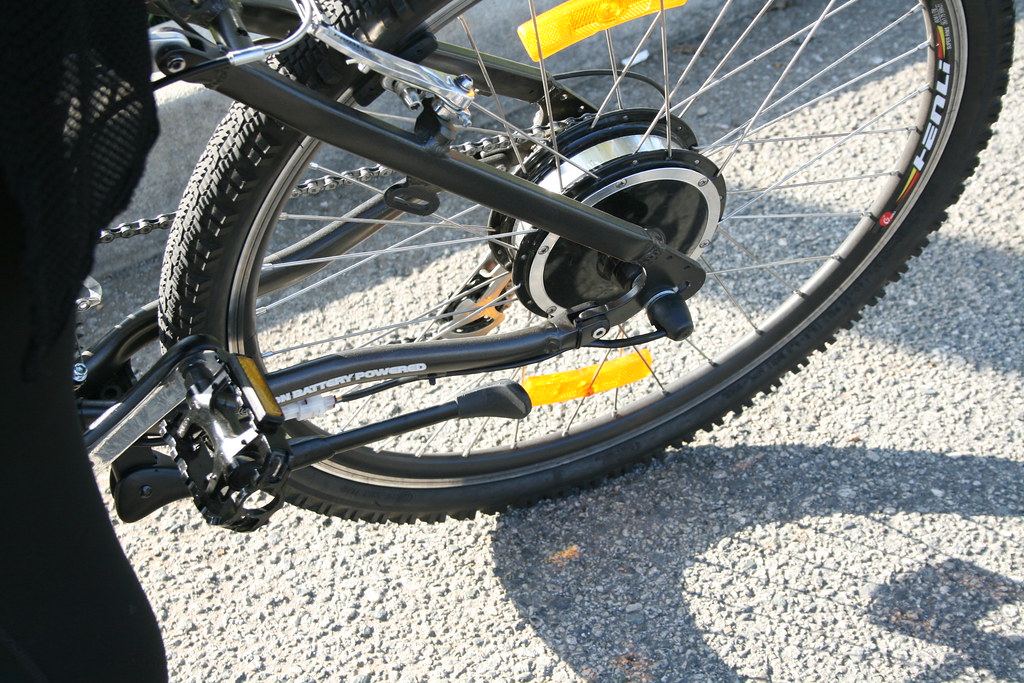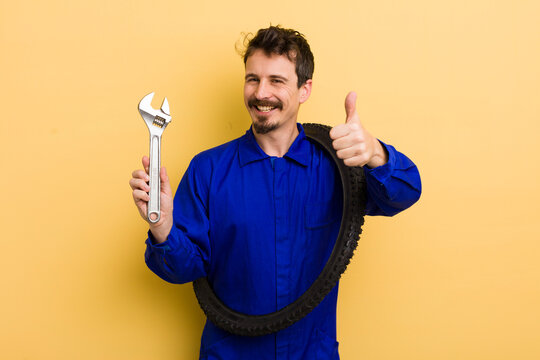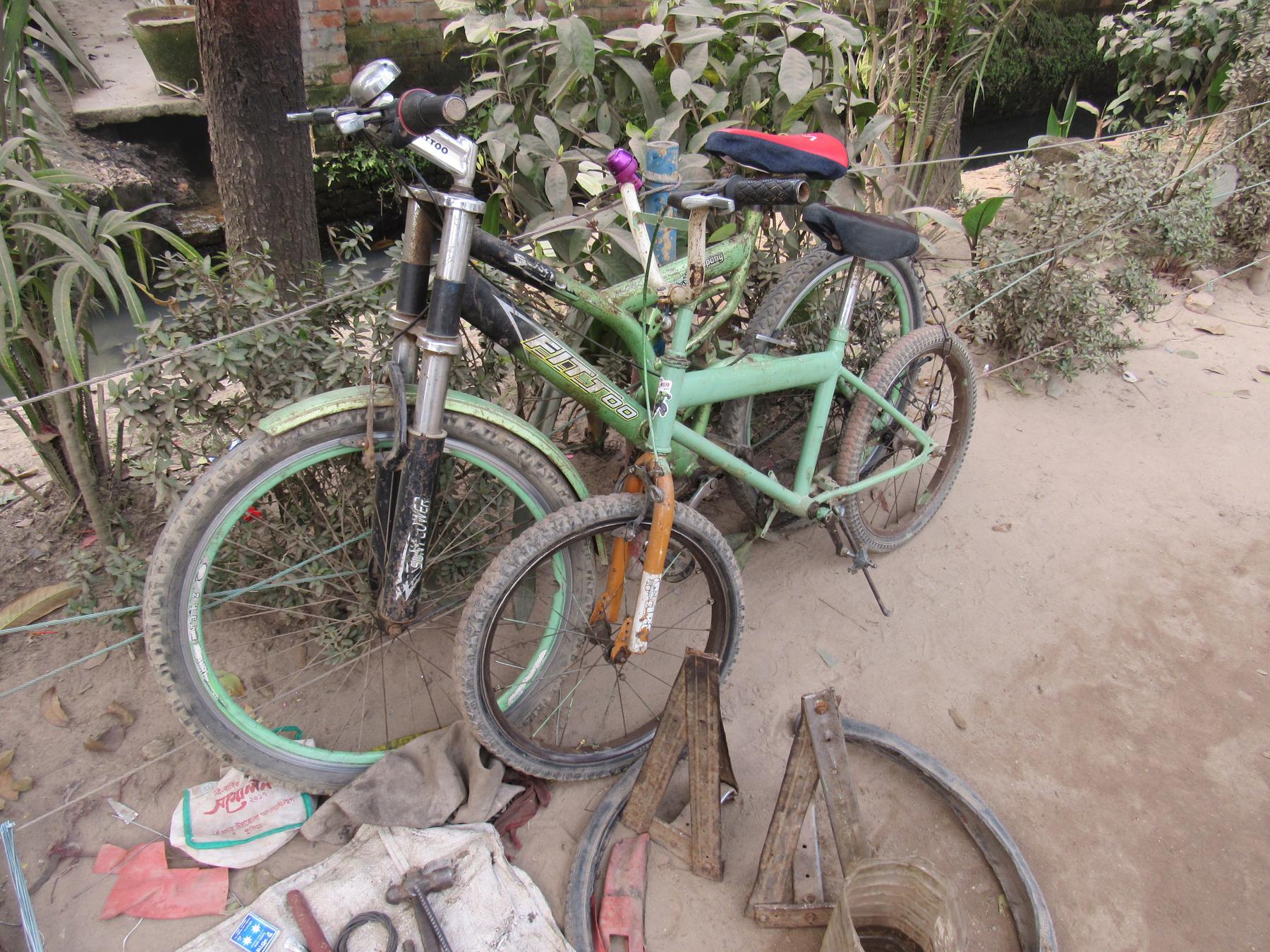If you’re an avid tandem bike rider, you know that proper tyre upkeep and maintenance is crucial for a smooth and safe ride. However, with so many different types of tyres on the market and varying opinions on maintenance techniques, it can be difficult to know where to start. we’ve compiled expert advice from seasoned tandem bike riders on how to keep your tyres in top condition. Whether you’re a beginner or a seasoned pro, this guide is sure to provide valuable insights and tips for maintaining your tandem bike tyres for years to come.
Introduction: Understanding the Importance of Proper Tyre Maintenance
Proper tyre maintenance is crucial for any bike, but it becomes even more critical when it comes to tandem bikes. Tandem bikes are heavier and carry more weight than regular bicycles, which puts extra stress on the tyres. As a result, neglecting your tandem bike’s tyres can lead to increased chances of accidents and damage to the bike.
Regular maintenance of your tandem bike’s tyres not only ensures that they are safe to ride on but also helps increase their lifespan. It includes proper inflation, regular inspection for wear and tear signs, avoiding overloading the bike beyond its maximum capacity, among other things.
By following some quick tips that we’ll discuss in this guide below, you can keep your tandem bike tyres in top condition throughout their life span while enjoying safe rides with your partner or friends.

The Fundamentals of Tandem Bike Tyres: Construction and Components
Tandem bike tyres are an essential component of the bicycle that provide traction, support and stability to riders. They come in different types such as clincher, tubeless or tubular and each type has its unique construction. The casing is made up of a layer of nylon material with rubber over it while the sidewalls are reinforced with extra layers for added durability and puncture resistance. The tyre tread is responsible for grip and handling on various terrains thus must be well designed with appropriate patterns for road, trail or hybrid usage.
The width of tandem bike tyres varies from 20mm to 42mm depending on the intended use, rider weight and terrain conditions. A wider tyre provides more comfort but slower speed while a narrower tyre offers higher speed at reduced comfort levels. Properly inflated tyres help reduce rolling resistance by maintaining their shape which translates into smoother rides hence saving energy during pedalling. Inadequate pressure may lead to pinch flats, rim damage or deformation from inadequate support against obstructions on roads or trails like rocks, curbs among others.
Regularly inspecting your tandem bike’s tyres helps identify any wear & tear signs which when promptly addressed can prolong their lifespan thereby giving you better value for money spent.

Signs That Your Tandem Bike Tyres Need Attention and Replacement
Regular inspection of your tandem bike tyres is essential to ensure that they are in good condition and safe to ride on. Signs that your tyres need attention include cuts, punctures, bulges, and uneven wear. These issues can cause a blowout or loss of control while riding, which can be dangerous. It’s important to replace your tyres if you notice any of these signs or if they are worn down beyond the recommended tread depth. Additionally, if you notice that your tyres are losing air pressure quickly or if they feel spongy when riding, it may be time to replace them. Proper tyre maintenance can help prevent these issues and keep you safe while riding your tandem bike.
How to Choose the Right Type of Tyre for Your Tandem Bike
Understanding the Different Types of Tandem Bike Tyres
There are two main types of tandem bike tyres to consider: clinchers and tubulars. Clincher tyres feature a separate inner tube that’s inflated independently, while tubular tyres have the tube sewn into the tyre casing itself. Clinchers offer easier maintenance and replacement, as well as more affordable pricing options. Tubulars, on the other hand, provide a smoother ride with less rolling resistance and increased traction but require professional installation and can be costly to replace. Consider your riding style, terrain conditions and budget when choosing between clinchers or tubulars for your tandem bike.
Factors to Consider When Choosing Tandem Bike Tyres
When choosing tyres for your tandem bike, it’s important to consider the type of riding you’ll be doing and the terrain you’ll be covering. Tandem bike tyres come in a variety of sizes and tread patterns, so it’s essential to choose the right one for your needs. Durability is also a crucial factor to consider, especially if you plan on taking your tandem bike on long rides or rough terrain. Additionally, make sure to choose tyres that are compatible with your tandem bike’s rims and brakes. Finally, don’t forget to consider the weight of both riders when selecting tyres, as this can affect the overall performance of your tandem bike.
The Pros and Cons of Each Type of Tandem Bike Tyre
When it comes to choosing the right type of tyre for your tandem bike, there are several options available in the market. However, not all tyres are created equal and each has its own pros and cons. Narrower tyres provide less rolling resistance which means you can ride faster with less effort, but they may also mean a bumpier ride due to decreased shock absorption. On the other hand, wider tyres offer better grip and stability on uneven surfaces but sacrifice speed. Ultimately, your choice should depend on your riding preferences and needs – whether you prioritize speed or comfort over grip and durability.
Tips for Maintaining Your Chosen Tandem Bike Tyres
Check the tyre pressure regularly: Proper tyre pressure is crucial for a smooth and safe ride. Check the pressure of your tandem bike tyres at least once a week using a reliable pressure gauge.
Inspect the tyres for wear and tear: Look out for signs of wear and tear such as cracks, cuts, or bulges on the surface of your tandem bike tyres. Replace them immediately if you notice any damage.
Use the right type of tyre for your riding style: Choose a tyre that suits your riding style and terrain. If you frequently ride on rough terrain, consider using wider tyres with more tread.
Keep your tyres clean: Regularly clean your tandem bike tyres with mild soap and water to remove dirt and debris that can cause damage over time.
Store your bike properly: When not in use, store your tandem bike in a cool, dry place away from direct sunlight to prevent premature ageing of the tyres.
Get professional help when needed: If you’re unsure about how to maintain or replace your tandem bike tyres, seek help from a professional mechanic who specializes in tandem bikes.

Essential Tools You Need for Maintaining Your Tandem Bike Tyres
Essential tools for maintaining your tandem bike tyres are a must-have to keep your ride safe and comfortable. The most important tool you’ll need is a reliable pump that can reach the optimal tyre pressure range (usually between 80-120 PSI). Additionally, investing in a pressure gauge will help ensure accurate readings when checking tyre pressure.
A puncture repair kit with spare inner tubes is also essential equipment for any serious tandem rider. A set of tyre levers can make removing tyres easier during maintenance or repairs. You may want to consider carrying a small multi-tool with screwdrivers, hex keys, and pliers as well.
To clean your tyres effectively, use soap and water along with a scrub brush. Avoid using harsh solvents or abrasive brushes that could damage the rubber material.
By having these necessary tools on hand, you’ll be able to maintain your tandem bike’s tyres correctly and prevent unwanted mishaps while out riding together.

Step-by-Step Guide for Inflating and Checking Pressure in your Tandem Bike’s Tyres
Step-by-Step Guide for Inflating and Checking Pressure
Maintaining the correct air pressure in your tandem bike’s tyres is crucial to ensure a smooth, safe ride. Too little or too much air can affect handling, stability, and even cause tyre damage.
To start with, you’ll need a reliable floor pump that comes with a gauge to measure the pressure accurately. The recommended tyre pressure varies based on several factors such as rider weight and terrain conditions, so make sure to check your tandem bike manual or manufacturer’s website for specific guidelines.
Remove the valve cap from each tyre and secure the pump head onto the valve stem. Pump up the tyre slowly while checking its progress on the gauge until it matches your target PSI level. Use a separate pressure gauge if your pump doesn’t have one built-in.
Once inflated properly, recheck both tyres’ pressures regularly before every ride using a high-quality digital tire gauge to maintain optimal performance levels of tandem bike tyres.

Common Mistakes to Avoid When Maintaining Your Tyres & Troubleshooting Them
- Common Mistakes to Avoid When Maintaining Your Tyres
- Troubleshooting Them
While proper tyre maintenance can extend the lifespan of your tandem bike’s tyres, there are some common mistakes that you should avoid. One mistake is over-inflating or under-inflating your tyres as it can impact their performance and result in uneven wear. Make sure to check the recommended tyre pressure for your specific tandem bike and adjust accordingly.
Another mistake is not checking for debris or damage regularly. Small cuts or punctures may seem insignificant at first but they can lead to bigger problems and even a blowout while riding. Inspect your tyres before every ride and remove any foreign objects lodged in them.
In case of a flat tyre, make sure you have the necessary tools such as spare tubes, patches, pump, and tire levers handy with you on rides so that you can quickly repair any damages.
If despite taking all precautions mentioned above if still face issues like persistent flats or vibration while riding look out for worn-out rims/tyres/spokes/hubs/bearings/etc., which might be causing it. It’s best to get an expert opinion when dealing with complex technicalities like these instead of just trial-and-error solutions that don’t always work effectively without guidance by experienced professionals.
on Keeping Your Tandem bike safe with regular tyre maintenance
Regular maintenance of your tandem bike’s tyres is crucial for ensuring a safe and enjoyable ride. By following the tips and guidelines outlined in this article, you can extend the lifespan of your tyres and avoid potential accidents or mishaps on the road. Remember to check your tyre pressure regularly and inflate them to the recommended level based on your bike’s specifications. Additionally, make sure to inspect your tyres for signs of wear and tear such as cracks, bulges, or punctures, and replace them if necessary. By investing in high-quality tyres and using the right tools for maintenance, you can keep your tandem bike running smoothly for years to come. Don’t neglect this important aspect of bike upkeep – take care of your tyres and enjoy a safe and comfortable ride every time.
maintaining your tandem bike tyres is crucial for a safe and enjoyable ride. By understanding the fundamentals of tyre construction and components, choosing the right type of tyre, and regularly checking pressure and inflation, you can extend the lifespan of your tyres and avoid potential accidents. With the essential tools and tips provided in this article, you can confidently maintain your tandem bike tyres and troubleshoot any issues that may arise. Remember to avoid common mistakes such as overinflation or underinflation, and always prioritize safety over convenience. By following these expert tips for tandem bike tyre upkeep and maintenance, you can ensure a smooth ride every time.
